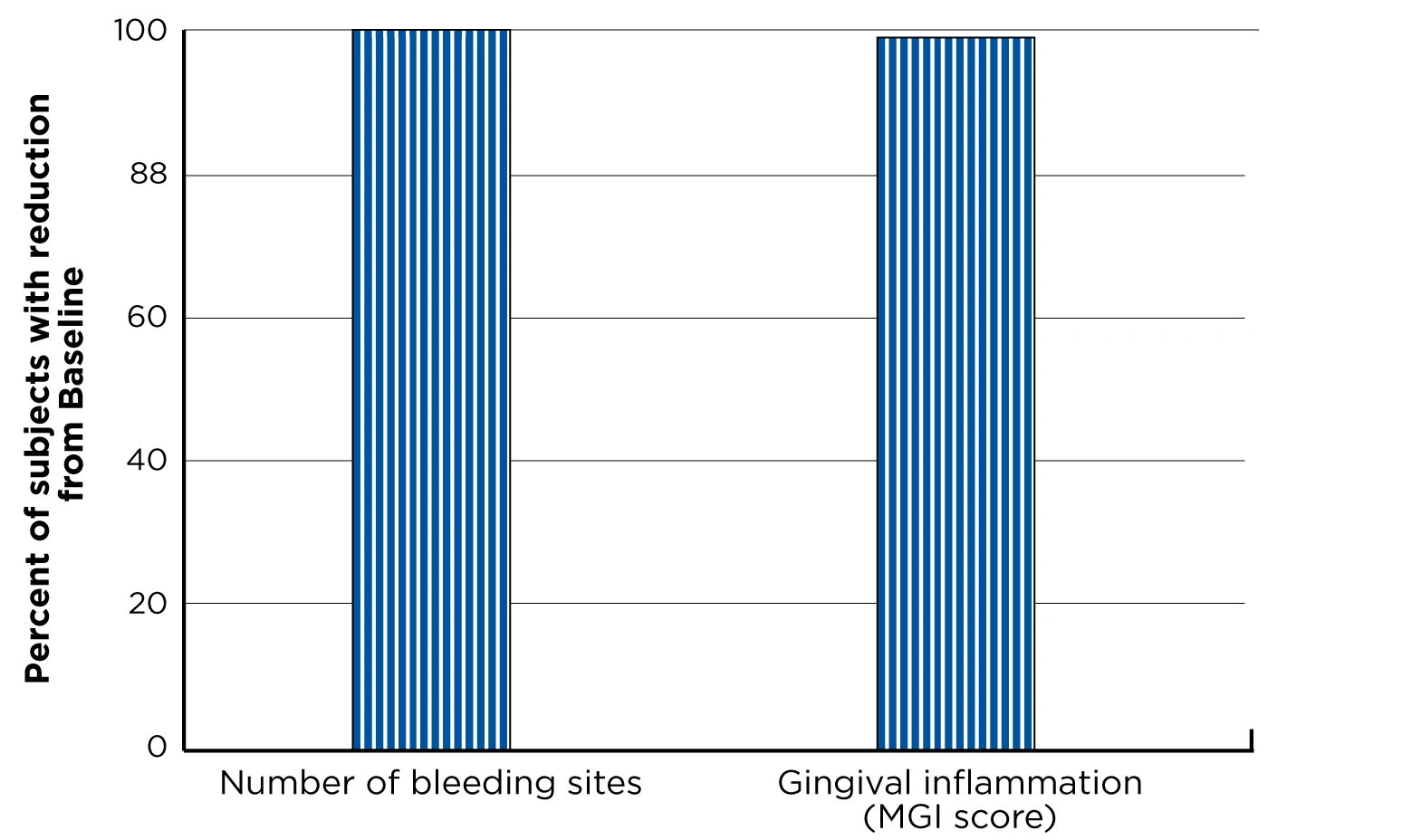Reduction Gingival Bleeding And Inflammation Following Use Of A Novel Stabilized Stannous Fluoride Dentifrice For 2 Months
Reference: CR Goyal, 1JG Qaqish,1 T He,2 R Eusebio.2 1All Sum Research, Mississauga, Ontario, Canada. 2Procter & Gamble, Mason, OH USA.
KEY CLINICAL FINDINGS
At the end of a 2-month clinical trial, 100% of subjects using a novel stabilized stannous fluoride dentifrice demonstrated a reduction in the number of bleeding sites compared to baseline. See Figure. For approximately 4 out of 5 subjects, bleeding was reduced by 40% or more.
99% of subjects had a reduction in gingival inflammation at the end of the trial versus baseline, as indicated by their Lobene Modified Gingival Index (MGI) score. See Figure. For approximately two-thirds of subjects, gingival inflammation was reduced by 10% or more.
Figure. Percent of subjects demonstrating a reduction in bleeding and MGI score.
Figure. Percent of subjects demonstrating a reduction in bleeding and MGI score.
OBJECTIVE
To compare the anti-gingivitis efficacy of a stabilized stannous fluoride dentifrice versus a positive control triclosan dentifrice over a 2-month period.
METHODS
This was a randomized, positive-controlled, double-blind, parallel-group clinical trial involving generally healthy adults with mild to moderate gingivitis.
Qualifying subjects were randomized to one of two treatment groups:
0.454% stabilized stannous fluoride dentifrice-
Positive control dentifrice with triclosan and 0.24% sodium fluoride
Dentifrice was distributed over-labeled or over-tubed for blinding purposes, with a soft manual flat-trim toothbrush (Oral-B® Indicator®, Procter & Gamble). Subjects were instructed to brush with their respective dentifrice according to each manufacturer’s instructions.
The following efficacy and safety evaluations were conducted at Baseline and Month 2: Modified Gingival Index; Gingival Bleeding Index; and Oral Soft Tissue.
Treatment groups were compared using analysis of covariance with Baseline value as covariate. All statistical tests were two-sided with a 5% level of significance.
CLINICAL COMMENT
Gingivitis, which typically results from poor plaque control, is characterized by gingival bleeding and inflammation. When formulated in a stabilized, bioavailable dentifrice, stannous fluoride inhibits gingivitis through bactericidal and bacteriostatic activity. Recent learnings show properly formulated stabilized stannous fluoride dentifrice also reduces gingivitis by binding to bacterial endotoxins in the gingival sulcus that trigger the inflammatory process. This mechanism results in less virulent plaque and decreased inflammation and bleeding. Findings from this clinical trial show that after 2 months of use, all subjects using the stannous fluoride dentifrice had a reduction in bleeding sites and virtually all (99%) had a reduction in their Lobene Modified Gingival Index score, an assessment of gingival inflammation. Based on these findings, dental professionals should consider recommending a stabilized stannous fluoride dentifrice, like Crest Gum Detoxify, to patients with gingivitis as well as those who are susceptible to the disease.


